Agenda
May 1–2, 2024 · Boston, MA
Boston Convention and Exhibition Center
All-Access Pass Holders can attend all agenda sessions and will have access to speaker presentations after the event. Agenda sessions are subject to change. Check back often for updates and additions.
Register Now
- All Topics
- Ai
- Automated Warehouse
- Development
- Enabling Technologies
- Engineering Theater
- Healthcare Robotics
- Keynote
April 30, 2024
TuesdayMay 1, 2024
WednesdayMay 2, 2024
Thursday
- 5:00 PM - 7:00 PM
Take Me Out to the Ballgame Welcome Reception
Step up to the plate and join us for a home run of networking opportunities at our baseball-themed welcome reception! Connect with industry professionals, swing by for lively conversations, and hit it out of the park with new connections while enjoying the spirited ambiance of America’s favorite pastime. Light food and drinks will be served. Don't forget to wear your favorite baseball team's apparel to show us who you're rooting for! Tickets required; free to sponsors and speakers, $35 for All-Access and Expo Only pass holders that purchase pre-event. $50 tickets purchased on site.Where160ABC
- 8:00 AM - 6:00 PM
Registration Check in Hours
Sponsored By
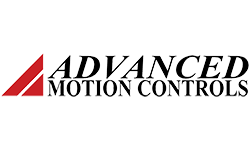
 9:00 AM - 9:45 AM
9:00 AM - 9:45 AMHumanoid Robots Get to Work
By Jonathan Hurst Co-Founder & Chief Robot Officer | Agility RoboticsJonathan Hurst is Co-Founder and Chief Robot Officer at Agility Robotics, the world’s leading developer of humanoid robots for commercial applications. Hurst’s keynote will explore the technological breakthroughs propelling humanoids like Digit into the real world. Learn about the ongoing challenges and opportunities and go inside Digit’s first pilots with Amazon, GXO Logistics and more.KeynoteWhere258ABC- 10:00 AM
Exhibit Hall Opens
 10:00 AM - 10:45 AM
10:00 AM - 10:45 AMInside Amazon's Robotics Strategy
By Tye Brady Chief Technologist | Amazon Robotics, Steve Crowe Executive Editor - Robotics | WTWH MediaAmazon has accelerated its fulfillment operations to keep up with consumer demand. In this conversation with Tye Brady, Chief Technologist of Amazon Robotics, learn how the e-commerce leader has worked internally and with partners to develop and deploy technologies including mobile robots, automated storage, AI, and humanoid robots. Amazon will discuss its criteria for success and how it is striving to continually innovate.KeynoteWhere258ABC- 10:45 AM - 11:30 AM
Networking Break
Sponsored By
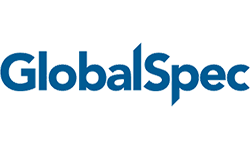 WhereExhibit Hall C
WhereExhibit Hall C  11:30 AM - 12:15 PM
11:30 AM - 12:15 PMPaving the Road to Success in Robotics Commercialization
By Stephen M. Muck Founder & Executive Chairman | Advanced Construction Robotics, Brandon Contino Co-Founder and CEO | Four Growers, Jennifer Apicella Executive Director | Pittsburgh Robotics Network, Andy McMillan Chair of the Board of DirectorsJoin us as we map out routes to successful robotics manufacturing and commercialization! Our seasoned panelists will explore the critical importance of understanding both the problem a robotics product is intended to solve and the technologies that can be harnessed to solve it. Our experts - with diverse backgrounds in agriculture, construction and entrepreneurship - will share the roadmap of their proven routes to success. Discover firsthand how these industry leaders have conquered obstacles, scaled operations, and transformed ideas into successful products. Gain valuable insights to pave the way for your commercialization journey.
Join us to learn:
· Essential elements of successful commercialization
· How to simultaneously assess problems and technology awareness
· How to determine the best time to outsource manufacturing
Sponsored By
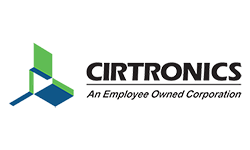 DevelopmentWhere257B
DevelopmentWhere257B 11:00 AM - 11:30 AM
11:00 AM - 11:30 AMMDR Extension Deadline – the 11th Hour?
By Ibim Tariah Technical Business Development Director – Medical Devices | SGS North AmericaIn light of reports from healthcare professionals about the imminent risk of shortages of devices, Regulation (EU) 2023/607 was adopted by the EU authorities in view of the exceptional circumstances arising from an imminent risk of shortages of medical devices and the associated risk of a public health crisis. It became necessary to extend the validity of certificates issued in accordance with Directives 90/385/EEC and 93/42/EEC and to extend the transitional period during which devices that are in conformity with those Directives can lawfully be placed on the market. This presentation covers the background that led to the current situation, eligibility- and key- requirements of the amending regulation, practical considerations on how to meet the May 26th 2024 deadline and potential impact to your business.
Sponsored By
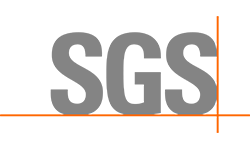 Engineering TheaterWhereEngineering Theater on Expo Floor
Engineering TheaterWhereEngineering Theater on Expo Floor 11:30 AM - 12:15 PM
11:30 AM - 12:15 PMDeveloping a Low Profile, Power Dense Actuator to Meet the Demands of Current Robot Designs
By Brian Coyne VP of Engineering | Harmonic DriveThis session will discuss the need for motion control solutions that offer leading edge performance and reliability, while navigating around tight design constraints. Power density continues to be a cornerstone in robot actuator design, but this is often compromised by additional functionality required of actuators and their cabling. We will examine a new solution to these problems through the development of Harmonic Drive’s LPA-20 actuator that optimizes power density while integrating a servo drive with options for CANopen or EtherCAT communication protocols.
Sponsored By
 Enabling TechnologiesWhere257A
Enabling TechnologiesWhere257A 11:30 AM - 12:15 PM
11:30 AM - 12:15 PMLeveraging Real-Time Data Insights in the Operating Room
By Dustin Vaughan Vice President of R&D, Robotics | Asensus SurgicalAsensus Surgical changed the surgical industry with its intra-operative Augmented Intelligence technology that's approved for use in operating rooms around the world. Recognized as a leader in digital technology, Asensus is committed to making surgery more accessible and predictable with consistently superior outcomes. Based upon the foundations of digital laparoscopy and the Senhance Surgical System, the company is developing the LUNA Surgical System, a next-generation robotic and instrument system as a foundation of its digital surgery solution.
This session will explore the development and introduction of cutting-edge technologies, sensing modalities, and real-time data collection capabilities of the LUNA Surgical Platform and the practical implementation of those capabilities. By harnessing these innovative technologies and investing in a multi-year development effort to cohesively integrate them, Asensus is poised to deliver on the promise of Performance Guided Surgery.Healthcare RoboticsWhere51 11:30 AM - 12:15 PM
11:30 AM - 12:15 PMHow Advancements in Mobile Robot Perception Are Improving Warehouse Operations
By Amado Antonini Director of Robot Perception | SymboticIn this session, Amado will delve into the cutting-edge advancements in mobile robot perception driving the future of warehouse automation. Representing Symbotic, a pioneering leader in this domain, he will introduce the audience to the company's latest developments and innovations. The talk will center on the pivotal role of mobile robot perception in enabling faster, flexible, and fully automated warehouse operations.
Sponsored By
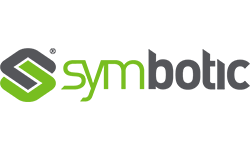 Automated WarehouseWhere50
Automated WarehouseWhere50 11:30 AM - 12:15 PM
11:30 AM - 12:15 PMEnabling Next-Gen AI Robotics
By Kosta Sidopoulos Product Application Engineer | AMDIn the ever-evolving landscape of robotics and AI, the demand for high-performance computing solutions continues to soar. This talk will cover how SOTA AMD products (GPUs, Adaptive SoC/FPGAs and Ryzen processors) combined with an open-source software ecosystem will revolutionize the field of robotics AI. We will delve into the unique features and capabilities of AMD’s AI enabled products, highlighting their adaptability and scalability for diverse robotics applications. Join us to discover how AMD is helping to shape the future of robotics AI and driving transformative advancements in the industry.
Sponsored By
 Where256
Where256- 12:15 PM - 1:45 PM
Lunch and Networking Break
 12:30 PM - 1:00 PM
12:30 PM - 1:00 PMIntelligent Humanoids: The End Game for Functional Safety Certification
By Nikolai Ensslen Founder & CEO | SynapticonCertification of the functional safety of stationary and wheeled mobile robots is already a significant challenge for designers and manufacturers. Ensuring and certifying safety for legged humanoids raises the bar to a new level. Adding advanced AI and at some point AGI, robot safety ultimately means an implementation of Asimov’s Positronic Brain. This talk will review the state of the art, as well as the bleeding edge of robot safety, outline best practices as well as give an outlook on future technologies and approaches that will enable universally intelligent humanoid robots that are intrinsically safe.
Sponsored By
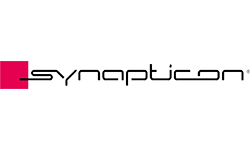 Engineering Theater
Engineering Theater 1:15 PM - 1:45 PM
1:15 PM - 1:45 PMNavigating Industrial Network Selection: Leveraging Vendor Specific Extensions to CANopen and EtherCAT Protocols
By Pier Belizaire Inside Sales Engineer | FAULHABER MicroMoChoosing the best industrial network and correct communication methods is crucial but is seldom the first thing considered in early project development. Existing familiarity often plays a larger role in decision making, than the optimal fit for your specific use case. At best, this results in severely under leveraging the full functionality of a chosen communication/networking methods. At worse, the limitations of a chosen method of communication and networking restricts a project to the point of having to be abandoned, wasting labor and resources. leveraging the expertise that trusted third party partners have on methods of communication and networking is one way to make better and more informed decisions. The accumulated experience these partners have can serve as a valuable resource to minimize complexity, cost, and optimize project outcomes.
Join Faulhaber MicroMo’s Pier Belizaire as he discusses:
o Critical factors to consider for networking and communicating regarding motion control systems
o Common pitfalls encountered by customers
o Leveraging novel implementations of communication and networking for an optimal solution
Sponsored By
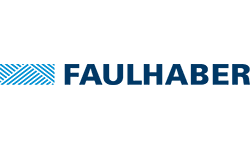 Enabling TechnologiesEngineering TheaterWhereEngineering Theater on Expo Floor
Enabling TechnologiesEngineering TheaterWhereEngineering Theater on Expo Floor 1:45 PM - 2:30 PM
1:45 PM - 2:30 PMSensor Calibration and Localization/Mapping For the Win
By William Sitch Chief Business Officer | Main Street AutonomyStruggling to calibrate and localize your robots? Wrestling with sensor fusion and perception problems? Unable to drive close to walls or obstacles? Delocalizing in highly-aliased environments with other movers? Delocalizing when GPS is intermittent? Unable to deploy without GPS + RTK? Looking for a scalable solution to deploy more bots in more locations with fewer technicians? William Sitch at Main Street Autonomy feels your pain.Enabling TechnologiesWhere257B 1:45 PM - 2:30 PM
1:45 PM - 2:30 PMBuilding a Scalable Testing Program to Drive Robot Reliability
By Nathaniel Czarnecki Lead Test Engineer | Scythe RoboticsNathaniel Czarnecki, lead test engineer and head of the testing squad at Scythe, will share the philosophy behind and framework for building highly effective robotics testing programs that can grow in scope and impact without becoming burdensome to the business. This involves prioritizing which facets of the product need the most in-depth testing, identifying meaningful metrics to measure them by, and using the findings to rapidly iterate on and improve the product – all with typically limited resources and an eye toward seriously expanded testing operations.
Resulting in six generations of its mower in less than six years, Scythe’s testing program has driven step-change product and performance improvements with each iteration of M.52, as well as significant updates between them. Through stories from the test fields at Scythe (along with plenty of destructive testing videos), Nathaniel will also share best practices for testing hardware and software in tandem, creating progressive testing programs, and building the rapport needed to collaborate with teams across an organization, offering insight relevant to any robotics company.DevelopmentWhere257A 1:45 PM - 2:30 PM
1:45 PM - 2:30 PMDesign for Peak Performance: Motion Control System Selection in Next-Gen Robotics
By Greg Harnsberger Senior Manager, Global Industry Marketing | Portescap, Yoshi Umeno Industry Manager, Global Medical & Robotics | KollmorgenUnleashing the full potential of robotic performance hinges on a delicate balance between motion control component selection and robotic design. With a range of joint sizes and demanding applications, choosing the right combination can be challenging. Join us as we demystify the complexity and illuminate the path to optimized motion control.
Crack the code on Motor Selection: Dive into the critical factors impacting motor selection across joint sizes, from high-torque motors replacing hydraulics to miniature motors for smooth and precise end-effector motion. Navigate the Integration of Motors into Your Robotics System: Uncover the secrets to seamless communication from feedback devices, ensuring optimal feedback and precise control. Real-World Case Studies: Witness the power of optimized motion control system partnerships in action, from collaborative surgical robots to humanoids.
Innovation Spotlight: Discover the latest technologies in motion control, empowering you to build the next generation of robots that will disrupt the markets in need.
Join us as we unlock the hidden potential of your robotic systems. Learn how to engineer an optimized motor system and create robots with industry-leading performance.Enabling TechnologiesWhere256 1:45 PM - 2:30 PM
1:45 PM - 2:30 PMMake vs. Buy: A Key Decision When Developing Medical Robots
By Corey Ryan Director of Medical Robotics | KUKAWhen developing a new medical device, one of the key decisions that will drive the direction of your development is “make vs. buy.” The impact of that decision can change the cost, timing and personnel needs of your entire company. As such, it is always worth evaluating and understanding all of the impacts before making that decision. While it may seem like a simple go/no-go item, this critical technology can make or break your business plan. In this presentation, we will discuss the key aspects of “make vs. buy” from the technology, financial and manpower perspectives and try to provide guidance that will help point any new project team (whether in a startup or established company) with right tools to make an informed decision and improved project plan.DevelopmentHealthcare RoboticsWhere51 1:45 PM - 2:30 PM
1:45 PM - 2:30 PMA.I. in the Warehouse: What You Really Need to Know
By Sean Pineau Head of 3PL Segments | Locus RoboticsYou’ve heard about artificial intelligence (AI) and have probably seen many companies touting how their products use AI to help your warehouse. We’re going to dive deep into separating the facts from fiction when it comes to AI in the warehouse.
Attend this session to learn about the impact, benefits, and considerations of implementing AI in your warehouse. In this presentation, we’ll discuss:
- Embodied AI and what it is
- What’s AI and what isn’t AI
- The benefits of AI
Understanding these perspectives and the true reality of AI helps warehouse managers separate the fluff from the facts and learn how to use AI for good.Automated WarehouseWhere50 2:00 PM - 2:30 PM
2:00 PM - 2:30 PMTaction at a Distance: The Importance of Tactile Feedback for Complex Teleoperation Tasks
By Professor Bob Crockett Co-Founder | HaptXSponsored By
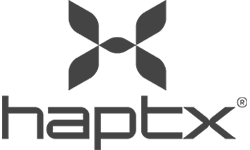 Engineering TheaterWhereEngineering Theater on Expo Floor
Engineering TheaterWhereEngineering Theater on Expo Floor- Could AI potentially rival the human brain? Learn how NEURA Robotics is developing cognitive robots that enable AI to perform physical tasks autonomously, ensuring a future where AI reliably serves humanity by anticipating needs and learning from past experiences. These robots of the future require not only advanced AI and perception, but also a physical body capable of interacting in human environments and emphasizing practical assistance.
Sponsored By
 AiWhere257B
AiWhere257B  2:45 PM - 3:30 PM
2:45 PM - 3:30 PMManaging Robot Autonomy with Behavior Trees
By Sebastian Castro Applied Scientist | The AI Institute, Andrew Stout Roboticist and Software Engineer | The AI InstituteBehavior trees are a mechanism for representing and abstracting complex behavior for autonomous agents. While they originated in the video game industry, they have been steadily gaining popularity in robotics over the past several years. In contrast to other widely used approaches such as finite-state machines, behavior trees offer several benefits in the structure they enforce, including a relatively concise standard modeling language, ease of modification and extension, and verification guarantees. This presentation will begin with an introduction to behavior trees, which covers the formalism, basic mechanics, and common idioms for robotics applications. We will then contrast behavior trees with alternative approaches and detail the main software packages and resources available for getting started. Finally, we will present some lessons learned from experience applying behavior trees in various robotics projects, spanning a range of application areas and academic versus commercial uses.DevelopmentWhere257A 2:45 PM - 3:15 PM
2:45 PM - 3:15 PMPower in Motion: Exploring Portable Power Solutions for Mobile Robots
By Dan Friel Battery Systems Specialist | VARTAJoin us for a demonstration showcasing various portable power solutions for mobile robots! We'll delve into the world of batteries and explore how they fuel the movement and intelligence of these dynamic machines.
Once only a futuristic idea, humanoid robots have now become part of the modern world. This session will unveil how different battery technologies address the unique power demands of these mobile robots. We'll bring the theory to life with demonstrations of solutions like the Easy Blade offering in action. See firsthand how factors like motor size and sensor usage influence a robot's power consumption.
Witness the ease of use of battery packs, the versatility of modular design, and the sustainable power of application specific batteries. Learn how each option tackles challenges like run time, weight, and recharge time.
This demonstration is perfect for anyone curious about the inner workings of mobile robots and the portable power solutions that keep them moving. Gain valuable insights to choose the most suitable portable power source for your own robotic creations!
Sponsored By
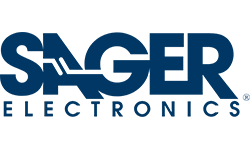 Engineering TheaterWhereEngineering Theater on Expo Floor
Engineering TheaterWhereEngineering Theater on Expo Floor 2:45 PM - 3:30 PM
2:45 PM - 3:30 PMDelivering AI and Machine Learning Enabled Robotics to the Manufacturing and Field Service Operations
By Larry Sweet Director of Engineering | ARM InstituteThe ARM (Advanced Robotics for Manufacturing) Institute is the nation’s leading robotics and artificial intelligence (AI) Manufacturing Innovation Institute. Since its inception in 2017, the ARM Institute has catalyzed over 150 technology and workforce projects to strengthen U.S. manufacturing. One-third have employed AI and machine learning to enable robotic manufacturing capabilities previously not available commercially, with more in the pipeline. The capabilities apply to fabrication, finishing, assembly, and inspection of new equipment. Advanced robotics transform sustainment operations from largely manual repair and refurbishment tasks to robotics, extending equipment lifetime in field operations.
This presentation will share updates on current projects, technical approaches, best practices, and lessons learned, plus steps to make the technology more broadly accessible to manufacturers large to small and facilitate technology transition via system integrators.
Sponsored By
 AiWhere256
AiWhere256 2:45 PM - 3:30 PM
2:45 PM - 3:30 PMClosing the Loop on Robotic Surgery Interventions with Intra-operative MRI
By Gregory Fischer Founder & CEO | AiM Medical RoboticsImage-guided surgery is a paradigm wherein instruments or therapies are precisely placed at specific locations within the body based on medical imaging, and often localized by intraoperative tracking systems. Conventionally, an MRI of a patient guides a thorough pre-operative planning effort, and at the time of surgery that plan is registered to the patient. However, the inherent mobility of soft tissue targets during surgery poses a significant challenge, rendering intra-operative imaging ‘stale’ and potentially unknowingly compromising the alignment of instruments with respect to the actual anatomical locations.
This presentation addresses this critical issue by exploring the potential of intra-operative MRI to actively track soft tissue targets and instruments in real-time. The incorporation of traditional robotic systems into the MRI environment has historically been challenging, limiting the feasibility of this approach. The talk will delve into innovative solutions devised to ensure precision motion safely within the MRI scanner without compromising image quality. By overcoming these challenges, a new era of “closed loop medicine” emerges, wherein instrumentation, anatomical targets, and other structures are dynamically tracked, allowing for interactive optimization of motion planning and instrument delivery.
Compelling case studies will be presented, including an MRI-compatible cooperative surgical robot designed for image-guided prostate biopsy that autonomously steers the needle tip based on live imaging, accommodating unmodeled motion and enhancing the accuracy of the procedure. Additionally, the talk will showcase an MRI-compatible stereotactic neurosurgery robot capable of accounting for brain shift during surgery and facilitating precise delivery of neurostimulation leads, drug delivery catheters, and needle-based ablation instruments for conformal brain tumor ablation, leveraging real-time MR thermometry.Healthcare RoboticsWhere51 2:45 PM - 3:30 PM
2:45 PM - 3:30 PMAutomate Your Factory for $2,799
By Alexander Mühlens Head of Low-Cost Automation | igusThe robot revolution won’t happen if everyone needs engineering degrees to install, operate, and service them. This panel will explore the challenges and opportunities of making robotics accessible to more users. Learn about how advancements made in ease of use, affordability, interoperability, and flexibility will bring robots to the masses.
Sponsored By
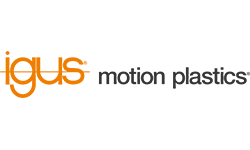 Automated WarehouseWhere50
Automated WarehouseWhere50- 3:30 PM - 4:15 PM
Expo Floor Tailgate
Visit booths on the expo floor for free drinks and networking! More details to come.
Participating Booths:
#401 - Sager Electronics
#310 - PTC Arena
Sponsored By

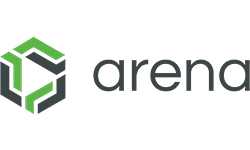
- 3:30 PM - 4:15 PM
Networking Break
featuring bavarian pretzels sponsored by ifm efector
Sponsored By
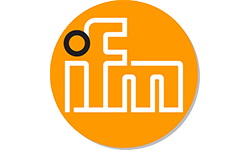 WhereExhibit Hall C
WhereExhibit Hall C  3:30 PM - 4:00 PM
3:30 PM - 4:00 PMEnabling Robotic Dexterity with Tactile Sensors
By Heba Khamis Co-Founder & CEO | ContactileLearn how tactile sensors can enable a gripper to apply the optimal grip force to hold any object and respond to dynamic loads. With this tactile feedback, the gripper will never grip too hard and break an item, nor will it grip insufficiently and drop an object. The gripper doesn’t even need prior knowledge of the object’s size, shape, weight, or packaging. The tactile sensors also enable complex robotic manipulation such as turning a handle and opening a door or inserting a USB cable. These tactile sensors could be the difference between a robot with the dexterity of a skilled person and a robot that is all thumbs. Come see for yourself how this crucial technology can help take robotic dexterity to the next level.Enabling TechnologiesEngineering TheaterWhereEngineering Theater on Expo Floor 4:15 PM - 5:00 PM
4:15 PM - 5:00 PMMassRobotics Accelerator Showcase
By Max Makeev Founder and CEO | Gopher, Demitri Balabanov CEO & CTO | Apparel Robotics, Ian Goodine CEO and Co-Founder | rStream, Thane Hunt Founder | Hominid X, Ayman Labib CEO and co-founder | SIMPL Automation, Erin M. Linebarger CEO & Co-founder | Robotics 88, Marita McGinn Director | MassRobotics Accelerator ProgramMassRobotics is the world’s first and largest independent non-profit innovation hub focused on growing robotics technology companies, scaling solutions and championing robotics adoption. The MassRobotics Accelerator, Powered by Mass Tech Collaborative, empowers the next generation of robotics startups through non-dilutive funding, custom tailored curriculum, and personalized mentorship. In this session the first accelerator cohort, a diverse group of startup technologies from across the United States, will showcase their technologies and businesses. Investors are encouraged to attend.DevelopmentWhere257B 4:15 PM - 5:00 PM
4:15 PM - 5:00 PMDepth Sensors for Robots: In Theory and In Use
By Brandon Minor Co-founder & CEO | Tangram VisionThis talk will explore the driving forces behind the creation of depth sensors, which are now ubiquitous in robotics. We will discuss how the limitations of many popular 3D sensors have spurred the need for new hardware and approaches. Attendees will gain insights into the sensor design and algorithms that underpin depth sensor capabilities, such as self-calibration and depth precision metrics. This theoretical foundation will set the stage for a discussion of real-life sensor experiences obtained through use by partners and customers.Enabling TechnologiesWhere257A- Robotics companies have to contend with a flood of log data that robots generate. Even a small number of deployments can quickly produce thousands of log files that contain complex, multi-modal sensor data. When managed incorrectly, this data quickly becomes a burden and can hide issues affecting system reliability and safety. Many companies are unable to answer simple questions like: “have we seen this problem before?
In this talk, we'll cover key lessons learned from productizing robots at Amazon, and show how you can leverage AI to search, transform and analyze robotics data at scale in the cloud. We’ll also highlight how getting this data under control can unlock the use of exciting new transformer models in robotics.DevelopmentWhere256  4:15 PM - 5:00 PM
4:15 PM - 5:00 PMDesigning (Super)Human-Level Haptic Sensing for Surgical Robotics
By Robert Brooks CEO | ForceNTouch is a key enabling modality in many surgical procedures. Recreating, amplifying, and augmenting the surgeon’s sense of touch in surgical robotics relies on innovations in compact, high reliability, scalable force-torque sensing technologies.
This session will give an overview of the roles of force and torque sensing in surgical robotics; including tip of instrument sensing, trocar remote center of motion/tissue contact, surgeon collaboration/leading/tool insertion, and surgeon-console interfaces.
We’ll dive in core specifications and the state-of-the-art of what’s possible with force-torque sensing technologies, along with best practices for implementing force-torque capabilities into your surgical robot, including:
- Thermal compensation and considerations under surgical drapes
- Grounding & shielding inside ultra compact robotic joints
- Engineering cable assemblies for high-flex, multidimensional, tight bend applicationsHealthcare RoboticsWhere51 4:15 PM - 5:00 PM
4:15 PM - 5:00 PMState of Warehouse Automation Panel
By Tim Tetzlaff Vice President, Global Head of Accelerated Digitalization | DHL Supply Chain, John Santagate VP of Robotics | Körber Supply Chain, Adrian Stoch Chief Automation Officer | GXO, Eugene Demaitre Editorial Director - Robotics | WTWH MediaThis panel discussion will feature logistics industry leaders who will explore the current state of warehouse automation. Learn about best practices, emerging trends, and how the latest robotics innovations are helping supply chain operators overcome major challenges.
Sponsored By
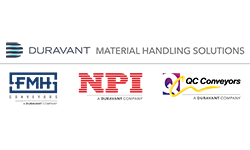 Automated WarehouseWhere50
Automated WarehouseWhere50 4:15 PM - 4:45 PM
4:15 PM - 4:45 PMFrom CAD Design To Digital BOM: Harness the Complexity and Power of Engineering Data
By Oleg Shilovitsky Co-founder and CEO | OpenBOMIn today’s fast-paced manufacturing landscape, where product complexity is constantly on the rise, the need for sophisticated data management solutions has become paramount. Companies are increasingly seeking methods to streamline processes, enhance collaboration across multiple design teams, and manage data more efficiently. In this session, we demonstrate OpenBOM's capabilities to capture diverse design information from various CAD systems and translate it into a fully digital product data representation. One of the key strengths of OpenBOM lies in its seamless integration with all major CAD systems, allowing it to capture different design conditions effectively and streamline information flow to other parts of organizations, including contractors, suppliers, and partners.Engineering TheaterWhereEngineering Theater on Expo Floor- 5:00 PM
Exhibit Hall Closes
- 5:00 PM - 6:00 PM
Mix & Mingle Networking Reception
Sponsored By
 Where258ABC
Where258ABC - 6:00 PM - 6:30 PM
RBR50 Reception*
Sponsored By
 Where259AB Pre-function
Where259AB Pre-function - 6:30 PM - 8:00 PM
RBR50 Dinner*
Sponsored By

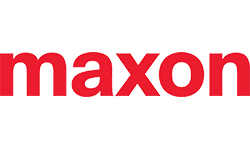
 Where259AB
Where259AB
- 8:30 AM - 4:00 PM
Registration Check in Hours
Sponsored By

- Sponsored By

 Where255
Where255  9:00 AM - 9:45 AM
9:00 AM - 9:45 AMDriving the Transformation of the Robotics Industry
By Ujjwal Kumar Group President | Teradyne Robotics, Steve Crowe Executive Editor - Robotics | WTWH MediaOver his 25-plus-year career, Kumar has successfully scaled businesses at major multinationals including General Motors, General Electric, and Honeywell. In this keynote, he will share some lessons he has learned and how they can be applied to accelerate the transformation of industry with robotics.KeynoteWhere258ABC 10:00 AM - 10:45 AM
10:00 AM - 10:45 AMBringing Disney Characters to Life with Robotics
By Tony Dohi Principal R&D Imagineer | Walt Disney Imagineering Research & Development, Morgan Pope Research Scientist | Disney Research, Moritz Baecher Associate Lab Director, Robotics I Disney ResearchJoin us for an interactive exploration into Disney's innovative use of robotics. Disney researchers Mortiz Baecher, Morgan Pope, and Tony Dohi will demonstrate Disney’s latest robots and explain how imagination and engineering are bringing some of Disney’s beloved characters to life.KeynoteWhere258ABC- 10:00 AM
Exhibit Hall Opens
- 10:45 AM - 11:30 AM
Networking Break
WhereExhibit Hall C  11:00 AM - 11:30 AM
11:00 AM - 11:30 AMA New Approach to Building a Robotic Mind
By James Marshall Co-Founder & Chief Scientific Officer | OpteranRecreating intelligence in machines has been one of computer science’s grand challenges since Alan Turing. He proposed imitating the human mind and envisioned a symbolic approach. Today, AI has followed a different path, relying on vast datasets and compute in an attempt to brute-force cognition. This approach is based on a loose understanding of the brain, but does it represent the end point for machine thought or a stop on the journey? In this talk, Prof. James Marshall will propose that the structural limitations of deep learning and technologies such as SLAM (simultaneous localization and mapping) prevent them from robustly solving the problem of "thinking" in a way that would satisfy Turing. Far from being "all about scale," standard approaches are already presenting diminishing returns, he said. Marshall will present an alternative approach, based on understanding whole-brain function, not of humans to begin with, but simple organisms such as insects. He will explore how solving the problem of ‘solving’ thinking most likely has its roots in solving the problem of moving autonomously in the world. In addition, Marshall will tie theory with practice by showing the short-term payoff of this approach: substantially more efficient and robust autonomy for robots in the real world.Enabling TechnologiesEngineering TheaterWhereEngineering Theater on Expo Floor 11:30 AM - 12:15 PM
11:30 AM - 12:15 PMGenerative AI's Impact on Robotics
By Sandra Skaff Senior Alliances and Ecosystem Manager | NVIDIA, Juan Aparicio Co-Founder & CEO | Reshape Automation, Russ Tedrake Toyota Professor of EECS, Aero/Astro, MechE | MIT & VP, Robotics Research | Toyota Research Institute, Mike Oitzman Editor - Robotics | WTWH MediaGenerative AI is revolutionizing the software industry, but how can this breakthrough be applied to robotics? This panel will discuss the applications of large language models (LLMs) and text generation applications to robotics. It will also explore fundamental ways generative AI can be applied to robotics design, model training, simulation, control, human-machine interaction and more.AiWhere257B 11:30 AM - 12:15 PM
11:30 AM - 12:15 PMThe Importance of Deterministic Data Transmission of ROS Trajectories
By Anthony Redamonti Software Engineer | Copley ControlsThe Robot Operating System (ROS) is gaining popularity in the robotics industry because it is an open-source platform that solves a common problem: trajectory calculation for complex, multi-axis machines. However, users are faced with the issue of sending the trajectory information in a reliable, deterministic way. Software libraries that handle the low-level EtherCAT and CANopen communications can bridge the gap between the controller and the drive, simplifying the overall development of complex motion control applications. If the method of trajectory transmission is unreliable, undesired behavior may occur, such as choppy motion, damaged payloads, and error conditions. The DS402 Protocol for Motion Control has defined Interpolated Position Mode as a means of standardizing the control of multiple coordinated axes through the transmission of synchronization (SYNC) pulses and process data objects (PDO’s). High-resolution trajectories result in high data rates that must be handled by both the controller and drive. Some controllers use real-time operating systems to deal with the high data rates. Another approach utilizes data buffers in the firmware of both the controller and drive to provide forgiveness for controller latency. In either case, engineers designing robotic systems will find that low-level software to process the data is necessary to achieve reliable, high performance motion control. Processing libraries such as the Copley Motion Library (CML) provide easy implementation that integrates seamlessly with the MoveIt2 API and utilizes the DS402 Protocol to deliver smooth, synchronous motion over the CANopen or EtherCAT networks.Enabling TechnologiesWhere257A 11:30 AM - 12:15 PM
11:30 AM - 12:15 PMHolistic Drive System Optimization for Robotics
By Tobias Wellerdieck Head of Robotic Drive Systems | maxonThe need for increased productivity and lower cost are driving the growth of robotics in various industries. In the past the push for robotic automation was mostly constrained to industries with well-defined challenges in controlled environments such as manufacturing industry and automated logistics. The nature of the applications allows for straightforward, top-down optimization of the robotic application and its subsystems. Although being complex in nature, the resulting requirements for drive systems are often defined as part of a portfolio. The customer selects the appropriate drive solution in terms of cost, efficiency, power, precision, etc. Today, robotics is entering new markets with weakly defined problem sets and a broad spectrum of possible environment conditions. Examples of this trend are mobile robots in inspection and agriculture, collaborative robots and medical robots for assisted living and rehabilitation. Developing solutions for these applications leads to multi-objective optimization problems with higher complexity compared to classical applications. Top-down optimization approaches are rendered obsolete because of increasingly important two-way interactions across system layers. Robotic system developers and drive system suppliers benefit from close cooperation to achieve the holistic optimization of the application including its drive system. This contribution outlines the challenges of novel robotic applications and shows how drive systems as a sub-system are impacted. Our approach of integrating component and robotic application models into a single, holistic drive system optimization methodology is shown in detail. A focus is put on how the cooperation of system integrator and sub-system supplier is changing with our approach. Lastly, we provide insight into how the development of classical applications also benefits from the holistic optimization methodology.DevelopmentWhere256 11:30 AM - 12:15 PM
11:30 AM - 12:15 PMHow Cloud Robotics Unlocks Industrial Automation for SMMs
By Etienne Lacroix Founder & CEO | VentionSmall and medium-sized manufacturers (SMMs) represent 98.6% of manufacturing businesses in the United States. Despite their critical role in the economy, SMMs encounter challenges in adopting traditional automation methods due to barriers to entry, rising inflation costs, and labor shortages. In this session, Etienne Lacroix will explore how cloud robotics offers a transformative solution, leveling the playing field for SMMs seeking access to automation technology. The development of robot cells online now facilitates knowledge-sharing across practitioners, eliminates “reinventing the wheel behavior” and mitigates risks before investing in capital expenditure. This shift in risk and cost dynamics, distinguishing cloud robotics from traditional approaches, significantly lowering barriers to automation adoption, particularly for small businesses aiming to compete globally. Etienne will delve into the key benefits of cloud robotics, including the ease of knowledge sharing among users through the online development of robot cells and the concept of digital twins allowing manufacturers to de-risk their project in the virtual world prior to investing. Key Takeaways 1. Understand the risks faced by SMM when adopting industrial automation 2. How platforming and productization of industrial automation eliminate technology risk related to automation 3. How near-accurate digital twins enable process risk reduction without CapEx investment 4. How cloud robotics enables knowledge sharing and re-use between SMMsAutomated WarehouseWhere50 11:30 AM - 12:15 PM
11:30 AM - 12:15 PMASTM Standards for Robotics and Autonomous Systems
By Adam Norton Associate Director, NERVE Center | UMass LowellRobotics and automated systems used in many industries still lack sufficient standard specifications for interfaces, test methods for performance comparison, and practices for implementation. These gaps can stifle industry adoption and innovation.
The ASTM F45 Committee on Robotics, Automation, and Autonomous Systems is working to fill these gaps through the development of standard terminology, practices, classifications, guides, test methods, and specifications applicable to these systems.
This talk will include an overview presentation on the committee’s recent and upcoming activities, as well as an interactive discussion session to gather industry feedback on recommendations for future standards developments to ensure alignment with the needs of the community, both from a developer and user perspective.DevelopmentWhere051 11:45 AM - 12:15 PM
11:45 AM - 12:15 PMExploring the Engineering Trade-Off: Integrated Actuators vs. Custom Component Design
By Sebastian Markert Product Development Manager Automation | SumitomoThis exploration delves into the optimal applications for integrated actuators in various domains such as Robots, CoBots, and Machine tools, providing insights into the advantages and drawbacks of this design choice. A custom component design approach is elucidated, shedding light on the engineering trade-offs involved. The discussion extends to the types of companies and applications that favor each design method based on relevant performance criteria, including stiffness, backlash, lost motion, functional safety, torque/speed/thermal capabilities.
Essential elements for developing high-performance rotary actuators, examining the development processes and timelines for both design approaches will be outlined. The audience gains an understanding of the time-saving potential in projects when integrated actuators are employed, leveraging vendor-developed solutions. Simultaneously, the benefits of a custom component approach are highlighted, offering a tailored solution but requiring a longer development and validation timeframe.
System performance and timelines remain key objectives in motion control developments, with a comprehensive exploration of the advantages and disadvantages of both integrated and custom approaches. The discussion emphasizes the accessibility of matured technology in robotics through integrated actuators, even for users without an extensive background in motion control development. While integrated actuators facilitate the rapid development of sophisticated Motion Control Systems, the limitations in overall system performance are also articulated.
In conclusion, integrated actuators present a shortcut to developing advanced Motion Control Systems, allowing users to focus on software development, the core intellectual property in both startups and established companies to design next groundbreaking designs in the dynamic field of robotics.
Sponsored By
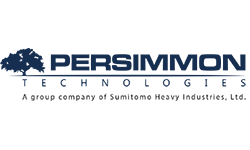 Engineering TheaterWhereEngineering Theater
Engineering TheaterWhereEngineering Theater 12:30 PM - 1:00 PM
12:30 PM - 1:00 PMMassRobotics Form & Function Challenge Finale
By Russell Nickerson Partner Engagement Liasion | MassRoboticsThe winners of the second MassRobotics Form & Function Challenge will be announced. All participants will be exhibiting their prototypes on the showfloor. Learn more about the Form & Function Challenge here.Engineering TheaterWhereEngineering Theater on Expo Floor- 12:15 PM - 1:30 PM
Lunch and Networking Break
 1:15 PM - 1:45 PM
1:15 PM - 1:45 PMRevolutionizing Robotic Design: Unleashing the Power of Microservices in a Thriving Ecosystem
By Ralph Opper U.S. Business Development Manager | Bosch RexrothDiscover how ctrlX Automation is transforming robotic design by harnessing the potential of microservices. Whether you are venturing into machinery with robotic functionalities or seeking a cutting-edge development platform for your software team, delve into a world of possibilities with Apps for agnostic robot programming, 3D simulation, precision-driven vision-guided pick & place, quality control, palletizing solutions, seamless voice control integration, and the robust capabilities of ROS2. Join us to explore how this innovative approach accelerates your journey towards efficient and adaptable robotic solutions.
Sponsored By
 Engineering TheaterWhereEngineering Theater on Expo Floor
Engineering TheaterWhereEngineering Theater on Expo Floor 1:30 PM - 2:15 PM
1:30 PM - 2:15 PMFundamentals of Designing AMRs
By Yael Fainaro President and Chief Business Officer | RGo Robotics, Ted Larson CEO | OLogic, Prabhakar Gowrisankaran VP of Engineering and Strategy | Performance Motion Devices, Mike Oitzman Editor - Robotics | WTWH Media, Carsten Horn Applications Engineering Manager | maxonThis panel will focus on the fundamental principles of designing autonomous mobile robots (AMRs). It will cover key aspects such as locomotion, perception, planning, control, and intelligence. Attendees will hear from industry leaders who will also emphasize the significance of safety, robustness, and scalability in design, providing a comprehensive understanding of the foundational concepts needed for successfully developing AMRs for various applications.Enabling TechnologiesWhere257B 1:30 PM - 2:15 PM
1:30 PM - 2:15 PMThe Robots Are Here. What's Next?
By Ryan Gariepy Co-Founder & CTO | Clearpath Robotics by Rockwell AutomationWhether fixed in place or free to roam, driving in factories or flying through the skies, robots have become increasingly capable. They are now able to adapt, analyze, navigate, and execute complex missions - autonomy is becoming ‘solved’! But, with robotics and automation being rapidly transformed by new developments in AI, there is immense potential to unlock entirely new horizons in the field. On top of this, many related fields are going through similar evolutions. In this talk we will take a look at how companies and organizations can take advantage of these trends to shape their futures.DevelopmentWhere257A 1:30 PM - 2:15 PM
1:30 PM - 2:15 PMOne Model to Rule Them All: How far Away is General-Purpose Robot AI?
By Adrian Macneil CEO | FoxgloveIncredible progress has been made in Large Language Models (LLMs) and Generative AI over the past few years, where large general-purpose “foundation” models have come to dominate over more specialized models. However, so far we have not seen widespread adoption of general-purpose AI in robotics, with most production systems still relying on specialized models and hand-tuned algorithms.
In this talk, Adrian will review recent progress in AI robotics and discuss recent achievements as well as outstanding challenges.AiWhere256 1:30 PM - 2:15 PM
1:30 PM - 2:15 PMAccelerating Autonomous Vehicle Development Through Performance Tracking
By Astha Kukreja Technical Lead | Latitude AIOur mission is to give drivers time back during their journeys and revolutionize travel for enhanced safety, reduced stress, and make driving enjoyable for all. Join this session to stay informed about how automated driving is playing a pivotal role in reshaping the future of road travel. Explore the significant challenges currently faced in the realm of autonomous mobility and understand their impact on public perception. Gain insights into Latitude AI's efforts to develop a robust automated driving product through testing and performance tracking.DevelopmentWhere50 1:30 PM - 2:15 PM
1:30 PM - 2:15 PMMassRobotics Healthcare Catalyst Showcase
By Matthew Sefati CEO | Cobionix, Ryan James Co-founder and CEO | Dopl Technologies, Rachael Wallach Founder and CEO | Limber Technologies, Kevin DeMarco CEO & Co-Founder I RIF Robotics, Amaury Ciurana Co-Founder and CEO | REEV, Jayiesh Singh CEO I Able Innovations, Manuel Sanchez Founder and Chairman of the Board of Directors l Healthic, Juan Necochea Director of Strategic Partnerships | MassRoboticsMassRobotics, FESTO, Mitsubishi Electric Automation, MITRE, Novanta and other key players in the healthcare and robotics space are hosting the 3rd annual Healthcare Robotics Startup Catalyst Program. The goal is to advance healthcare robotics companies by providing the connections, guidance and resources they need to grow and succeed.
During this session, attendees will hear pitches from the following seight healthcare robotics startups currently in the catalyst program: Able Innovations, AiM Medical Robotics, Cobionix, Dopl Technologies, Healthic, Limber Technologies, REEV and RIF Robotics . Each of these startups embodies the innovative spirit and potential to transform the healthcare industry with their unique robotic solutions.Healthcare RoboticsWhere51 2:30 PM - 3:15 PM
2:30 PM - 3:15 PMExploring the Frontiers of Robotics Simulation: Latest Challenges & Innovations
By Gerard Andrews Senior Product Marketing Manager, Robotics | NVIDIAAI is being used in perception, control, and human robot interaction. Simulation has proved a pivotal tool in training and testing these AI models for robotics. This presentation delves into the cutting-edge trends and challenges at the intersection of AI and simulation. From synthetic data generation to robotics learning gyms, this talk covers the technical aspects of why the simulation-first approach is revolutionizing how robots are developed.DevelopmentWhere257B 2:00 PM - 2:30 PM
2:00 PM - 2:30 PMFrom Virtual to Reality: The Impact of Advanced Simulations on Robotics
By Brian Geisel CEO | Geisel SoftwareJoin Brian Geisel, CEO at Geisel Software, as he gives you an inside look at the world of advanced simulation, a game-changer for the robotics industry. Through the lens of a groundbreaking NASA case study, you'll see firsthand how cutting-edge simulation environments are not just about testing theories but about creating solutions that work in the real world.
Discover how to harness the power of advanced simulation to refine designs, enhance performance, and solve real-world challenges safely and efficiently. Brian will discuss a pivotal technique centered around efficient "retraining" cycles, a method that allows for rapid adaptation and refinement of the training model to quickly adapt to real-world scenarios.
But how close to reality can we get without actual risk? Find out how intricate three dimensional digital assets are driving a level of training and validation previously unattainable. The depth, accuracy, and photorealism of these simulation environments are making training and validation more effective than ever before, reducing the time and costs associated with development cycles, and significantly improving the reliability and performance of robotic systems in real world operations.
By the end of our session, you'll gain actionable insights that will empower you to implement advanced simulation techniques in your own projects. Join us to transform your understanding into practical strategies for innovation and success.
Sponsored By
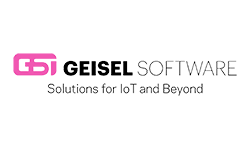 Engineering TheaterWhereEngineering Theater on Expo Floor
Engineering TheaterWhereEngineering Theater on Expo Floor 2:30 PM - 3:15 PM
2:30 PM - 3:15 PMBeyond Factories: Challenges of Unstructured Robotics
By Dave Coleman Founder & CEO | PickNik RoboticsWhile robot arms have seen great adoption in manufacturing, we believe we have just begun to scratch the surface of applications in other industries and domains. In these semi-structured and unstructured environments, the technical challenges of reliably applying robot arms are much greater. But the need is enormous. This talk will highlight how PickNik has been using advanced software approaches to lead the robotics industry in applying manipulation and grasping to some of the toughest challenges. From farm fields to ghost kitchens, subsea to outer space, we will discuss our strategies to leverage modern software (including ROS) to make robotic arm hardware more intelligent.DevelopmentWhere257A 2:30 PM - 3:15 PM
2:30 PM - 3:15 PMTelesurgery is Closer Than You Think
By Brian Miller EVP, Chief Digital Officer | IntuitiveThe technology to do remote surgery is here today. We have a chance to drive the discussion to create conditions where true remote surgery can help a wide range of patients.Healthcare RoboticsWhere050 2:30 PM - 3:15 PM
2:30 PM - 3:15 PMIs a Medical Certifiable ROS Needed?
By Tom Amlicke Software Architect & Robotics Systems Engineer | MedAcuityThe Robot Operating System (ROS) has changed how engineers entering our workforce learn robotics. These engineers had a shared toolbox to bootstrap their robot projects or research. They could start working on a robot and immediately solve real-world problems. ROS 2 addressed architectural problems that made it difficult to turn an R&D robot into a viable product. ROS 2 can scale up or scale down to meet the needs of the specific robot product. Safety is always a concern with robotics. In the past, robots were placed in work cells to operate safely away from humans. Industries with safety and risk concerns have created versions of ROS that allow systems to be more easily certified safe for use. Some examples are Apex.OS (automotive self-driving car safety standard 26262) and Space ROS (aerospace safety standards DO-178C and NPR7150.2D). ROS is not currently the de facto standard for surgical robotics and robotics in medical devices, but maybe it should be. In this presentation, we will explore the potential benefits from a version of ROS that is tailored to address the standards needed for the medical device industry, such as IEC 62304 and ISO 60601.This presentation will identify the possible features a medical ROS would support and compare potential benefits to actual benefits reported by users of Apex.OS and Space ROS. We will examine all possible paths that we as an industry can take to achieve a medical certifiable ROS, ensuring its success and sustainability to maximize industry-wide advantages.Healthcare RoboticsWhere51 2:30 PM - 3:15 PM
2:30 PM - 3:15 PMStartup Survival Guide to Lean Times
By Anna Davydova Robotics Strategy Lead | Amazon, Nag Murty Co-founder & CEO | Electric Sheep, Oliver Mitchell Partner | ff Venture Capital, Fiona O’Donnell McCarthy Principal | True VenturesSince the COVID-19 pandemic, funding to early-stage robotics startups has dipped. High interest rates have slowed orders, and investors are wary of solutions in search of problems. However, the demand for automation is continuing to grow across industries, and capital is available to companies that can demonstrate value and a realistic timeline. This panel will share tips from experienced investors and robotics companies on what they're looking for. Learn how organizations can navigate the challenging path to commercialization.DevelopmentWhere256 3:30 PM - 4:30 PM
3:30 PM - 4:30 PMRobots and Beyond: The future of surgery
By Rajit Kamal VP and GM, Robotic Surgical Technologies | MedtronicRobots. Artificial intelligence. Real-time. Remote. We can only predict what surgery will look like in 50 or 100 years, but one thing will always be true: the patient and surgeon will always be at the center. It is a serious and even sacred relationship. And the same is true for the surgeon and the technology they use. It’s not about the bits or bytes, it’s about how the tools help best meet each patient’s unique needs, to deliver the best possible outcome. Join Rajit as he goes beyond robots to explore the fascinating and exciting intersection of people and technology shaping the future of surgery. Spoiler, there will be robots and AI—and beyond.KeynoteWhere258ABC- 3:30 PM - 6:00 PM
MassRobotics Career Fair*
WhereLevel 2 SE Lobby
-
-
Resources
Subscribe to The Robot Report
Advertise with usFor registration or logistic questions, contact events@wtwhmedia.com
-
Sponsorship Opportunities
Colleen Sepich
Event Sales Director
csepich@wtwhmedia.com
857-260-1360Heather Herbert
Event Sales Manager
hherbert@wtwhmedia.com
512.760.0570



